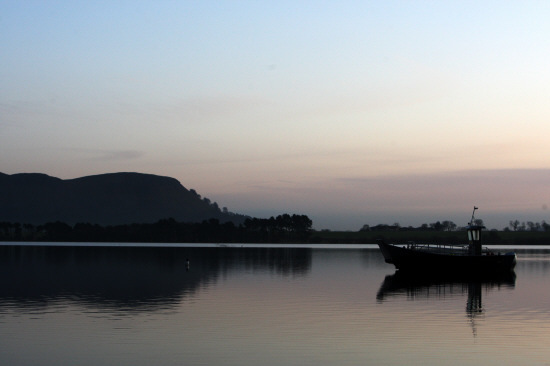Recent research shows “hopeful signs” for the recovery of the world-renowned Loch Leven brown trout.
Its population has been under intensive study for more than 40 years and in 2007 the Centre for Ecology and Hydrology (CEH) launched a hydro-acoustic survey.
It featured probes so sensitive they could easily detect individual fish in the depths of the loch.
This, along with a range of netting surveys, found the fish were generally in good condition.
Trout over 50 centimetres in length were recorded and a range of ages suggesting new young fish each year.
The trout in the loch had declined so much since the 1970s that Kinross Estate Company resorted to artificially stocking the loch and burns with brown trout and, later, rainbow trout.
Pollution was the main factor in the decline but there was also a coincident rise in cormorant numbers when the stocking of brown and rainbow trout began.
In addition to the CEH study, Marine Scotland recently revisited sites on Loch Leven feeder burns last surveyed in 1994 to examine young brown trout populations.
The fish spawn in the feeder burns and the resultant young trout live in the burns for up to two years before returning to the food-rich waters of the loch.
Marine Scotland found that the burns are very productive and although the densities of young fish at the sites were generally slightly lower than in 1994 they are still high for the UK.
Researchers, including Professor John Thorpe who first studied fish populations at Loch Leven in the early 1970s, have been poring over the results of the study.
The findings have also been examined by officials from Marine Scotland and CEH, members of the Kinross Estate Company, managers of the fishery, and representatives from Scottish Natural Heritage, which manages the loch as a national nature reserve.
They concluded that pollution levels have dropped dramatically.
Meanwhile, trout stocking has ceased, cormorant numbers are lower and a natural fishery has been restored.
Kinross Estate has observed excellent water clarity in the loch, with healthy, large fish and increased numbers of visiting anglers.
Neil Mitchell, reserve manager at Loch Leven, said, “These results are very encouraging. It is our aim to work with the estate to sustain a healthy wild population of brown trout as an important element of the overall ecology of the loch.”
Jamie Montgomery, of the Kinross Estate Company, added, “We were very pleased with the findings which give some hope that there will be a recovery in the fishery.”
